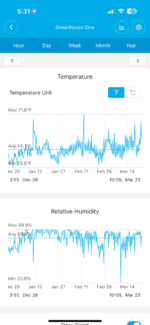Firstflush
Chumono
I mentioned moving to MT and now I have. From OC. Got rid of all the trops.
I kept a JPM, Chines Elm (Jacqueline Hillier) and 2 Liquidambars. The liquids I don’t think can grow here without significant protectiom.
My trees were allowed to get the first frost and the steady diving temps until they went into a unheated greenhouse. We have gotten into the teens at night and it will get minus F a few times this winter. Elm is in a deep 4” and JPM is in a 1 gal.
The soil is getting more frozen if not fully. Should I keep the trees in the unheated greenhouse…elm and JPM.
I brought them inside out of fear. Bad move? Put them back?
BTW the wild RMJs, J. Horizontalis, ponderosa pines and larch are off the hook here.
I kept a JPM, Chines Elm (Jacqueline Hillier) and 2 Liquidambars. The liquids I don’t think can grow here without significant protectiom.
My trees were allowed to get the first frost and the steady diving temps until they went into a unheated greenhouse. We have gotten into the teens at night and it will get minus F a few times this winter. Elm is in a deep 4” and JPM is in a 1 gal.
The soil is getting more frozen if not fully. Should I keep the trees in the unheated greenhouse…elm and JPM.
I brought them inside out of fear. Bad move? Put them back?
BTW the wild RMJs, J. Horizontalis, ponderosa pines and larch are off the hook here.

